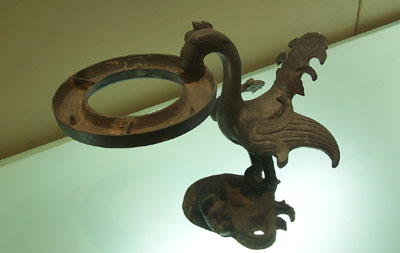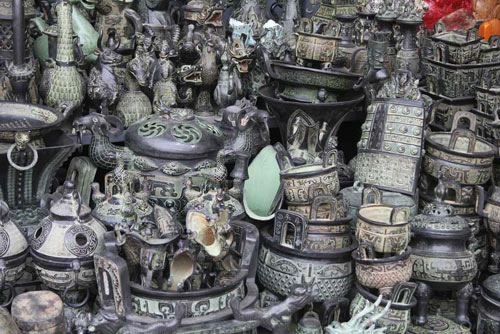|
|
Chinese Bronze Vessels
The Chinese started casting bronze ware about 5,000 years ago. Aristocrats from the Shang (1600 B.C. to 1100 B.C.) and Zhou (1122 B.C. to 256 B.C.) dynasties commonly used bronze vessels in both daily life and ancestral rituals. Because of their use in ancestral rituals, the vessels became important objects, because both dynasties greatly honored their ancestors for protection. Aristocrats kept the bronze vessels in ancestral halls and used them during various feasts and banquets. Most were used to cook food or to heat millet wine. However, certain vessels started to symbolize power and status. Ding, a tripod caldron, was originally a cooking and ritual vessel. Over time, it developed into a symbol of power for its owner, generally over land. Bronze ware exemplified contemporary technical and artistic developments. Early bronze vessels, including Jue and Zhi, both wine goblets, and Zun and Ku, both wine beakers, were all developed in shape and decoration. Ding is the exception. Most Shang vessels are in the shape of an animal and decorated with motifs of Taotie, a vicious legendary beast and other such designs. In 1976, archaeologists uncovered the only Shang tomb ever found intact at Anyang in Henan province, the capital of the Shang dynasty. It was the burying chamber of Fuhao, a female general who served as Emporer Wuding's consort. Archaeologists found numerous bronze vessels within the tomb, including those Fuhao used during her lifetime and those that served as her burial vessels. Many famous Shang bronze vessels displayed around the world are from this tomb.
|
| Copyright © China.org.cn. All Rights Reserved 京ICP证 040089号 京公网安备110108006329号 网络传播视听节目许可证号:0105123 京公网安备110108006329号 京网文[2011]0252-085号 |
 0
0 









Go to Forum >>0 Comment(s)